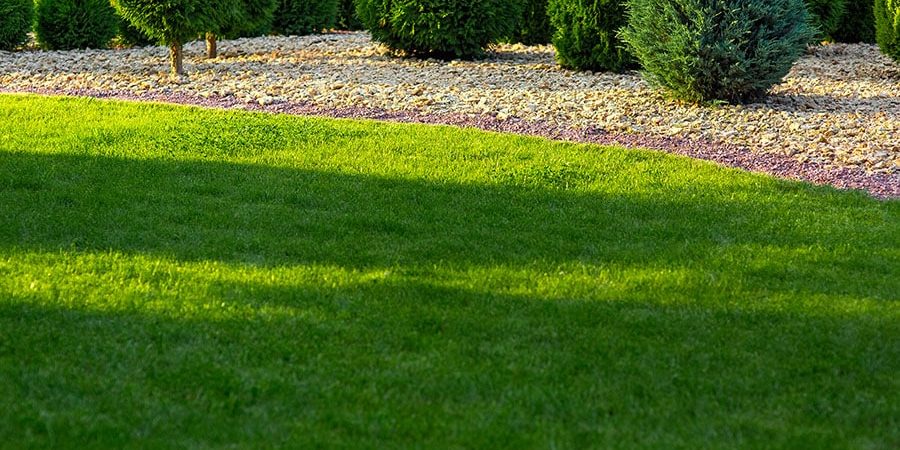Some people enjoy the process of yard work, and others see it as a boring (but necessary) chore. Whatever your perspective is on the matter, there’s no denying that proper lawn and garden care is crucial to making your home look great.
An important, and sometimes overlooked, facet of your lawn is edging. If you’re interested in improving your edging and tackling this project on your own, then look no further! We’ve compiled some general tips and specific ideas to make your DIY garden edging installation go smoothly.
Benefits of Landscape Edging
To put it simply, landscape edging is important because it keeps things where they need to be. Barriers between your planting beds, garden spaces, and yard will help make sure that the various plants stay in their designated areas. Grass will have a harder time infiltrating your garden, and your lawn will have fewer intruders from your flower beds.
Furthermore, edging helps prevent erosion. By fencing in specific areas of your yard, wind and water are less likely to carry material from one section to another. For example, without edging, you might soon find your mulch spread all over the fringes of your lawn or expensive topsoil washed down the street.
And lastly, well-maintained edging gives a small but noticeable boost to your home’s curb appeal. Crisp lines and a manicured look will make people going by appreciate the effort you’ve put in.
Preparing Your Garden for Lawn Edging
Before you get started digging a trench or choosing edging materials, it’s important to take stock of the quality of your soil. Edging will certainly help your landscaping stay healthy, but it can’t solve every problem.
If you find that your soil is unstable or drains poorly, then you might need to do some remediation before installing your edging. BaseCore Geocells are a fantastic DIY option for making sure your garden is secure.
The HDPE cells lock your soil in place while allowing for better water drainage. They’re also incredibly strong and durable, making them perfect for high-traffic areas of your yard.
With no special tools or training required, you can order your materials and get started immediately! Our handy six-step guide is available here and will walk you through installing your Geocells.
Easy to Install DIY Lawn Edging Ideas
The following DIY garden edging ideas are easy projects that you can complete with a trip to the hardware store and a few hours outside!
No Dig Edging Options
If even the thought of digging a trench makes you start sweating, you’re in luck! There are several no-dig edging options on the market in a variety of materials, including plastic and steel. Typically, these work by placing the edging around your garden border and hammering them into place. They’re often accompanied by stakes to provide extra support.
These kinds of products are great if you’re trying to work cheaply and quickly, and they can still look fantastic! One of their weaknesses, however, is maintenance and upkeep. Because this kind of edging isn’t buried very deep, it can come loose somewhat easily.
Brick Edging
Bricks or cinder blocks are great DIY options, because they’re easy to work with and can be laid in nearly any shape. And if you have some left over from a previous project, you won’t even have to buy your materials!
In the event that you do purchase bricks, be sure to choose something that complements the style of your home without trying to match it exactly. Finding a perfect match is almost impossible, and your project will look much better in a related but distinctly different color.
Bricks offer a strong surface that can withstand the weight of lawn equipment. Create a flat border around the edge of your flower beds to make mowing even easier. You’ll be able to roll the wheels of your mower over the bricks without damaging your flowers.
You can also stack bricks two or three high and then infill with soil to create a beautiful raised garden bed. This is an easy way to add some dimensionality to a flat yard. Depending on how heavy your rainfall typically is, the bricks can either be laid one on top of the other or sealed together with mortar.
River Rocks
Using river rocks or pebbles for your edging can add some visual flare to your landscaping. The distinctive material breaks up what might otherwise be a monotonous palette of green and brown. Many hardware stores will carry a variety of rocks to choose from, giving you plenty of options to match your home and express your personal style.
Smaller rock options work well for creating smooth delineations between areas. Larger rocks work better as physical barriers, preventing the spread of plants and materials from one section to another. Keep your end goal in mind when making your selection.
Most river rock installation does require digging a shallow trench. Measure and dig your trench ahead of time to get a good understanding of how much material you need to buy. It’s always a good idea to buy a little more than you need in case you have to replace some down the line.
For extra security, you can even add a layer of mortar to the bottom before placing your stones to really lock things into place. This will prevent rocks from coming loose and washing away, or even worse, damaging mowing equipment.
Ready to Start Your DIY Garden Edging Project?
If you’re ready to undertake a DIY garden edging project but still have a few questions, we are here to help! Our team of experts has helped countless homeowners with projects big and small.
Backyard Bases is a proud supplier of industry-leading BaseCore GeoCell products designed to meet your landscape edging needs. You can consult our FAQ page or contact us directly at (888) 897-2224.
